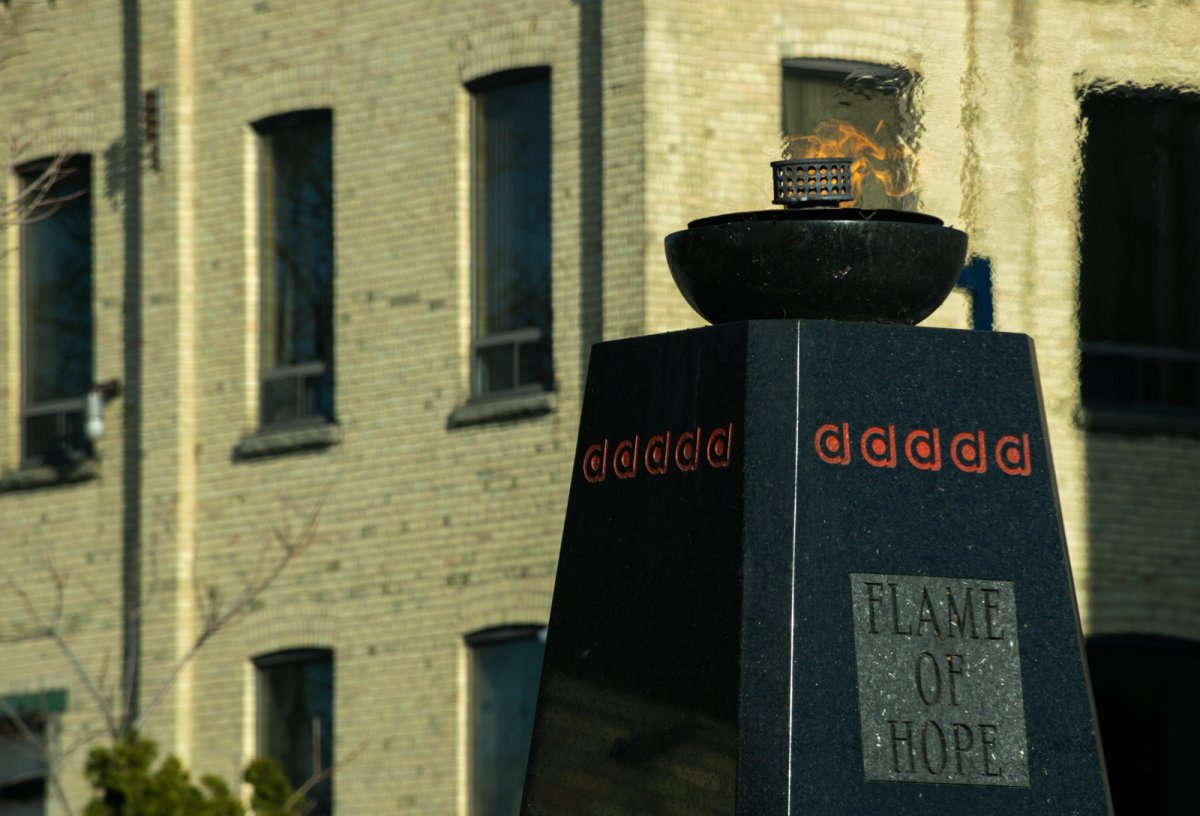It was 100 years ago this Saturday morning when Sir Frederick Banting awoke in the night from a restless sleep in the bedroom of his London, Ont. house and scribbled down on a piece of paper an idea that, within three years, would lead to the discovery and widespread use of insulin.

The discovery, marveled as one of the greatest triumphs of modern medicine, would go on to save millions of lives around the world from a disease that, up until that point, came with a life expectancy of between six months and two years.
“Diabetes before insulin was pretty much a death sentence — a slow, gruesome death,” said Dr. Robert Hegele, a professor of medicine and biochemistry at Western University and the Director of London Regional Genomic Centre at Roberts Research Institute.
“(Insulin) brought people back from the brink, so it was almost a miracle.”
In marking the centenary, Hegele co-authored a new piece, published this week in The Lancet Diabetes and Endocrinology, that looks back at the events that transpired before and after Banting’s historic idea.
At the time, Banting was a 29-year-old doctor whose struggling private practice, located at the corner of Adelaide Street and Queens Avenue where he also lived, forced him to take up work as an instructor at Western University’s medical school.
- 3 women diagnosed with HIV after ‘vampire facials’ at unlicensed U.S. spa
- N.S. mom calls for better ultrasound access after private clinic reveals twins
- Solar eclipse eye damage: More than 160 cases reported in Ontario, Quebec
- ‘Super lice’ are becoming more resistant to chemical shampoos. What to use instead
Near the end of October 1920, Banting was tasked with giving a lecture about the pancreas and its relationship with carbohydrate metabolism and diabetes on Nov. 1.
It was subject matter Banting didn’t know much about, says Grant Maltman, curator of Banting House National Historic Site of Canada — the “Birthplace of Insulin” — and co-author of the Lancet piece.
“He knew that the treatment at the time was the Allen diet, the starvation diet…. He knew that the pancreas was involved somehow, because they’d known about that for many years by this point,” he said.
“So he went to the medical school and read everything he possibly could to prepare the lecture. That evening, when he retires to bed, he takes to bed with him a surgical journal that he hadn’t had a chance to go through.”
Inside the journal Surgery, Gynecology and Obstetrics, Banting reads an article by the University of Minnesota’s Moses Barron in which Barron has deduced from several case reports that pancreatic islets — groups of cells in the pancreas — secreted hormones that regulated blood glucose levels, Hegele and Maltman write.
Banting eventually turns off the light, but the article and his upcoming lecture keep him from drifting off to a restful sleep.
Then, it happens.
“Finally about two in the morning after the lecture and article had been chasing each other through my mind for some time, the idea occurred to me,” Banting would write in his unpublished memoir. “I got up and wrote down the idea and spent most of the night thinking about it.”
It was on the page that he had written:
“Diabetus. Ligate pancreatic ducts of dog. Keep dogs alive till acini degenerate leaving islets. Try to isolate the internal secretion of these and relieve glycosurea.”
“We have that page. It’s preserved and it’s dated Oct. 31, 1920,” said Hegele. “That’s where he scribbled down the idea of ‘this might be a way of getting the internal secretion out of the pancreas that could be used as a medication.'”

Banting would later team up with Prof. John James Rickard Macleod, undergraduate student Charles Best, and biochemist James Bertram Collip at the University of Toronto. Early experiments were on dogs in 1921. The first successful insulin test on a human came in 1922 involving a Toronto teen named Leonard Thompson.
“Without this London event, without Banting waking up at two o’clock in the morning with his idea, we don’t have the discovery of insulin in 1921 and we don’t have it at the University of Toronto or in Canada for that matter,” Maltman said.
Within two years of Banting’s idea, insulin would be discovered, tested, made safe for humans, and put into widespread clinical use. Banting and Macleod would be awarded the Nobel Prize in Physiology or Medicine the following year in 1923.
Banting, just 32 at the time, became not just youngest person to win the Nobel Prize in physiology or medicine — a distinction he still holds — but also the first Canadian to win a Nobel Prize ever.
“The first recording of the diabetes condition was almost 3,600 years ago, so people have been looking for something to treat this disease,” Maltman says.
“And then here’s a person who reads the right article at the right time with a completely different and open approach, you have a great student in Charles Best, you have a leading expert to guide the project through Macleod, and then you have Collip who just happens to be on sabbatical in Toronto.
“It truly is the four right people at the right place at the right time.”
A century later, there remains no cure for diabetes, which, including prediabetes, impacts as many as 11 million Canadians as of 2019, according to Diabetes Canada.
“We have better insulin today. What we still don’t have is anything better than insulin,” Maltman says.
Outside of Banting House, which Banting sold in September 1921 and in which Diabetes Canada opened a museum in 1984, the Flame of Hope continues to burn on until one is found.
“This 100th anniversary provides us a great opportunity to let Canadians know about the man and the story that they think they know,” Maltman said.
The coronavirus pandemic has halted any in-person anniversary celebrations that may have been planned at Banting House, which will be closed on Saturday.
Pre-pandemic, Maltman says the site attracted tourists from 85 countries every year, including researchers who have going to Banting House on their bucket list. Those visiting have also included members of the diabetic community. Some, he says, make the pilgrimage to stand in the bedroom where it all began.
For the centenary, Maltman says the historic site will be posting items of interest on its social media accounts, and is planning to reopen on Sunday by appointment only.
— With files from Pat Hewitt of The Canadian Press









Comments